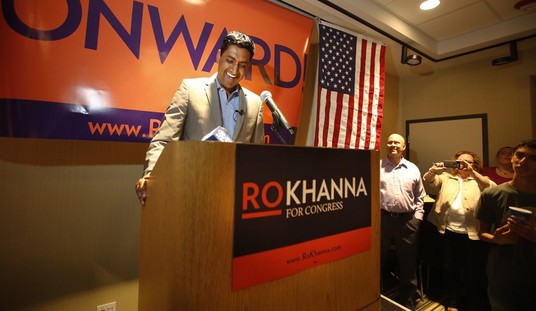The full clips from today’s show haven’t been posted on YouTube yet but the Washington Free Beacon grabbed this highlight of co-host Sunny Hostin explaining political polarization. “If you look at all the studies, the Republican party has moved further to the right than Democrats have to the left,” Hostin said. But then a moment later she added that the Republican party was an “extremist” party and the Democratic party has been “moving more to the center.”
Sunny Hostin: "Democrats and Republicans are farther apart ideologically today than at any time in the past 50 years, and that ideological divide breaks down to the Republican party being an extremist party, and the Democratic Party actually … moving more to the center." pic.twitter.com/iAlu4zG0f4
— Washington Free Beacon (@FreeBeacon) May 17, 2022
We’ve already had this debate a few weeks ago when Elon Musk posted this meme.
— Elon Musk (@elonmusk) April 28, 2022
That got a lot of reactions on the left including people posting the PEW graph that Hostin is referring to in the clip above.

First, notice that this shows both parties have moved away from the center. It does not show Democrats have moved to the center. But more to the point, this is DW-Nominate data which, as I explained here, is based on how willing a given congressperson is to vote for his or her party. It is not a chart showing left-right distribution in terms of policy. Just to prove the point, DW-Nominate scores democratic socialist Alexandria Ocasio-Cortez as near the center precisely because she’s more willing to buck the party than most Democrats.
I'm resisting the urge, but there's a lot of trolling to be done with the fact that DW-NOMINATE lists AOC as one of the most centrist Democrats in the House https://t.co/6ovFHQDvYs pic.twitter.com/Ambz6kKqRJ
— Steven White (@notstevenwhite) November 11, 2020
Even Philip Bump of the Washington Post pointed out that DW-Nominate was not a good way to demonstrate partisan polarization on issues:
There are a lot of valid criticisms of DW-NOMINATE in general that we could examine, but it’s not a great measure of what Musk is talking about anyway. Instead, let’s consider how Americans actually identify their own politics. Luckily, we have a metric for that: evaluations of ideology as measured in the biennial General Social Survey (GSS). The survey asks people to score their identity on a scale from one (extremely liberal) to seven (extremely conservative). In the middle is four, moderate.
Here’s how members of each party (including those who identify themselves as “strong” partisans) have rated their ideology on average since 2002.
What you’ll notice is that Democrats and strong Democrats have, in fact, gotten more liberal — but that Republicans and strong Republicans were far more polarized in the first place.
This graph is at least attempting to show actual self-descriptions (strong Republicans vs. strong Democrats) and it shows Democrats moving quite a bit to the left over time, enough that the “overall” or average position has moved to the left.
Hostin’s claim that the Democrats have moved to the center is not supported by PEW research or any other research that I’ve seen. And if you put the research aside for a moment and tick through a few issues it’s clear the Democrats have moved to the left. On gay rights, abortion, health care, immigration, gun control, religion and race the Democratic party is not moving to the center but away from the center.








Join the conversation as a VIP Member